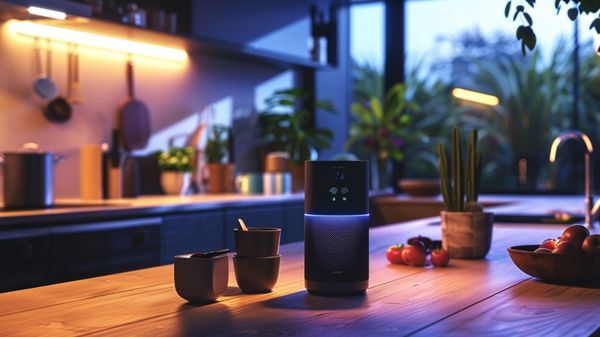When it comes to embracing a more environmentally conscious lifestyle, adopting energy-saving practices is paramount. From harnessing natural light to investing in LED bulbs, the choices we make in our daily routines can have a significant impact on both our ecological footprint and energy bills. By exploring strategies that not only contribute to sustainability but also enhance the quality of our living spaces, we open the door to a more harmonious relationship with our planet.
Key Takeaways
- Utilize natural light to reduce reliance on artificial lighting and maximize energy efficiency.
- Switch to LED bulbs for significant energy savings, longer lifespan, and eco-friendly lighting options.
- Improve insulation and temperature control to lower energy consumption and enhance comfort.
- Reduce standby power drain by switching off devices and using power strips effectively.
- Optimize ventilation to promote indoor air quality, energy efficiency, and overall well-being.
Natural Light Utilization
How can the strategic use of natural light positively impact energy consumption in residential and commercial spaces?
Natural light utilization plays a vital role in reducing the reliance on artificial lighting, consequently saving energy and cutting down electricity costs. By maximizing the use of daylight through design elements such as skylights, large windows, and light tubes, spaces can benefit from enhanced aesthetics and a more inviting ambiance. Daylight harvesting systems further optimize energy efficiency by automatically adjusting lighting levels based on the available natural light.
Apart from the energy-saving benefits, exposure to natural light has been associated with various positive effects on individuals, including improved mood, productivity, and overall well-being. Therefore, incorporating strategies to harness natural light not only contributes to environmental sustainability but also creates healthier and more comfortable indoor environments for occupants. Embracing natural light utilization in both residential and commercial settings is a practical and effective way to promote energy conservation while enhancing the quality of life within these spaces.
LED Bulb Switching
LED bulb switching is a prudent choice for those seeking energy efficiency and cost savings in their lighting solutions. With LED bulbs using 75% less energy and lasting notably longer than traditional bulbs, the switch proves to be a cost-effective lighting upgrade.
Not only do LED bulbs save you money on energy bills, but they also contribute to a safer and more eco-friendly environment due to their reduced heat production and lack of harmful materials.
Energy-Efficient Lighting Choice
By making the switch to energy-efficient lighting choices, households can greatly reduce their energy consumption and contribute to a more sustainable environment.
LED bulbs are an excellent option for those looking to save energy and lower their carbon footprint. Compared to incandescent bulbs, LED bulbs use 75% less energy, making them a cost-effective choice in the long run.
Additionally, LED bulbs have a much longer lifespan, lasting up to 25 times longer than traditional bulbs, which reduces the need for frequent replacements. LED bulbs also produce minimal heat, making them safer and more efficient for lighting purposes.
Choosing LED bulbs not only benefits the environment by reducing carbon emissions but also provides versatility in color temperatures and designs to meet various lighting needs.
Cost-Effective Lighting Upgrade
Shifting to energy-efficient LED bulbs offers a cost-effective solution for improving lighting efficiency and reducing electricity expenses in households. LED bulbs use 75% less energy than incandescent bulbs, leading to significant cost savings. They can last up to 25 times longer than traditional bulbs, reducing replacement costs. By making the switch, households can lower electricity bills by around $75 per year.
Additionally, LED bulbs emit minimal heat, making them energy-efficient and safe. With various color temperatures and styles available, LED bulbs cater to different preferences and lighting needs. Save energy and money by upgrading to LED bulbs, a smart choice for environmentally conscious consumers looking to reduce their carbon footprint and expenses.
Efficient Insulation and Temperature Control
Efficient insulation and temperature control are essential aspects of energy-saving in a home. Properly sealing windows and doors, along with utilizing a smart thermostat, can greatly reduce energy consumption.
These simple yet effective measures can help maintain a comfortable indoor environment while lowering heating and cooling costs.
Proper Window Sealing
Properly sealing windows with efficient insulation is essential for maximizing energy savings and maintaining a comfortable indoor environment. Energy-efficient windows can greatly reduce energy loss by up to 25% in a home.
By investing in double-pane windows with low-emissivity coatings, insulation and energy efficiency are enhanced, leading to lower energy bills. Well-sealed windows play a vital role in maintaining a consistent indoor temperature, decreasing the reliance on heating or cooling systems.
Sealing gaps and cracks around windows not only prevents drafts but also improves overall home comfort. This proactive approach not only benefits the environment but also contributes to cost savings in the long run, making it a valuable investment for eco-conscious individuals seeking to improve energy efficiency.
Smart Thermostat Usage
Implementing intelligent thermostat technology can greatly enhance energy efficiency and optimize indoor comfort levels. By utilizing smart thermostats effectively, you can save heating energy and reduce costs. Here’s how:
- Automated Adjustments: Smart thermostats can save up to 10-23% on heating and cooling costs by adjusting temperatures based on your schedule and preferences.
- Efficient Insulation: When combined with efficient insulation, smart thermostats further reduce energy usage and maintain a comfortable indoor environment.
- Remote Access and Optimization: Smart thermostats offer remote access and energy-usage reports to help you track and optimize your heating and cooling patterns, maximizing energy efficiency.
| # | Preview | Product | Rating | Price | |
|---|---|---|---|---|---|
| 1 |

|
Google Nest Thermostat - Smart Thermostat for Home - Programmable Wifi Thermostat - Charcoal |
$129.99
$99.99 |
Buy on Amazon | |
| 2 |

|
Amazon Smart Thermostat – Save money and energy - Works with Alexa and Ring - C-wire required |
$79.99
$62.99 |
Buy on Amazon |
Standby Device Reduction
Reducing standby device usage is a key strategy in conserving energy and cutting electricity costs in households and workplaces alike. Standby power drain accounts for approximately 10% of electricity consumption, even when devices are not in active use. Simple habits like switching off laptops and screens each evening can help minimize standby power consumption. Additionally, utilizing power strips to easily turn off multiple devices at once can prevent standby power drain effectively.
Another effective way to reduce standby power usage is by unplugging chargers once devices are fully charged. Leaving devices on standby for extended periods unnecessarily consumes energy. By adopting these practices and being mindful of standby power drain, individuals can make a significant impact on their energy savings and overall environmental footprint. Embracing these energy-saving techniques not only benefits the environment but also leads to lower electricity bills, making it a win-win situation for both consumers and the planet.
Ventilation Optimization Techniques
To optimize ventilation efficiency in homes and workplaces, incorporating short and intense ventilation sessions is a vital and guaranteeing approach that also promotes indoor air quality. This technique allows for quick air exchange while minimizing energy consumption.
Here are three energy-saving techniques to enhance ventilation optimization:
- Regular Ventilation: Consistently ventilating living and working spaces is essential for preventing the spread of viruses and maintaining overall ventilation efficiency. Implementing a routine ventilation schedule ensures a constant supply of fresh air.
- Extractor Fans: Installing extractor fans in areas prone to excess moisture and odors, such as kitchens and bathrooms, can efficiently remove pollutants from the air. This targeted approach helps improve indoor air quality while reducing the workload on central HVAC systems.
- Vents Management: Closing vents in unused rooms can prevent energy wastage by redirecting airflow to occupied areas. This simple action optimizes ventilation where it is needed most, promoting energy efficiency throughout the space.
| # | Preview | Product | Rating | Price | |
|---|---|---|---|---|---|
| 1 |

|
Broan-Nutone® Bathroom Exhaust Fan, 50 CFM Modern Grille, Energy Star Fan, 2.0 Sones |
$24.00
$19.99 |
Buy on Amazon | |
| 2 |

|
VEVOR Industrial Portable Air Blower Ventilator with Hose, 3198CFM 12 Inch Heavy Duty Tube... |
$124.90
$118.66 |
Buy on Amazon |
Mobility and Fitness Promotion
Encouraging active commuting and physical engagement can greatly enhance overall well-being and environmental sustainability. To save energy and reduce carbon emissions, individuals can opt for walking or cycling to work instead of driving. Organizing walking meetings not only promotes physical activity but also decreases reliance on transportation, contributing to energy conservation. Utilizing public transport or carpooling is another effective way to cut down on the number of individual vehicles on the road, thereby reducing fuel consumption and emissions.
Taking the stairs instead of the elevator is a simple yet impactful habit that not only saves energy but also incorporates physical activity into daily routines. Additionally, promoting fitness challenges among colleagues can foster a culture of health and wellness, encouraging a more active lifestyle and reducing sedentary behavior. By incorporating these mobility and fitness promotion strategies into daily life, individuals can contribute to both personal well-being and environmental sustainability.
Frequently Asked Questions
What Are the Eco-Friendly Ways of Energy?
Solar power, a sustainable energy source, harnesses sunlight to generate electricity. By utilizing solar panels, homes and businesses can reduce reliance on traditional power grids, lower energy costs, and minimize carbon footprint, contributing to a greener environment.
What Are Some Eco-Friendly Tips?
Eco-friendly gardening practices focus on sustainable methods to cultivate plants while minimizing environmental impact. Implementing composting, mulching, and using native plants can enhance biodiversity, conserve water, and reduce the need for chemical pesticides and fertilizers.
What Are 10 Ways to Conserve Energy?
To conserve energy, start by investing in energy-efficient appliances. Implement smart power strips to eliminate standby power usage. Properly insulate windows and doors. Adjust the water heater to 120°F. Utilize natural light where possible.
How Can I Be 100% Eco-Friendly?
To be 100% eco-friendly, consider adopting green transportation methods such as biking, walking, or using public transit. Reduce reliance on fossil fuels, lower emissions, and contribute positively to the environment. Embrace sustainable mobility practices for a greener lifestyle.
Conclusion
To sum up, integrating energy-saving tips into your daily routine can greatly reduce your environmental impact and save energy. By maximizing natural light, switching to LED bulbs, improving insulation and temperature control, reducing standby power usage, optimizing ventilation, and promoting mobility and fitness, you can create a more eco-friendly living environment. These simple yet effective strategies not only benefit the environment but also contribute to your overall well-being.




